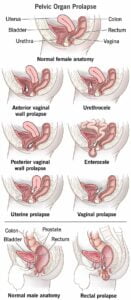Diagnosis and Treatment of Lazy Eye (Amblyopia)
Diagnostic Procedures
A comprehensive eye examination is conducted to evaluate the health of the eyes, detect any wandering eye, and ascertain the vision quality in each eye. Eyedrops are typically administered to dilate the pupils, which may cause temporary blurred vision.
For Preverbal Children
- Cataract Detection: A lighted magnifying device is used to identify cataracts.
- Gaze and Tracking: Tests are performed to evaluate the child’s ability to focus and follow objects.
For Children Aged 3 and Older
- Vision Tests: Utilizing pictures or letters, the child’s vision is assessed, covering each eye alternately to test the other.
Treatment Strategies
Initiating treatment during childhood is essential, ideally before the age of 7, to ensure the best outcomes as the eye-brain connections are still developing. Treatment options vary based on the underlying cause and the extent of vision impairment.
Corrective Measures
- Eyewear: Prescription glasses or contact lenses are used to address refractive errors like nearsightedness, farsightedness, or astigmatism.
- Eye Patches: An eye patch is worn over the stronger eye for several hours daily to stimulate the weaker eye.
- Bangerter Filter: A filter placed on the lens of the stronger eye to blur its vision, thereby encouraging the use of the weaker eye.
- Atropine Eyedrops: Drops that blur vision in the stronger eye to promote usage of the weaker eye, with potential side effects like light sensitivity and irritation.
Surgical Interventions
- Surgery: Procedures to correct droopy eyelids, cataracts, or to straighten the eyes may be necessary in conjunction with other treatments.
Additional Therapies
- Activity-Based Treatments: Engaging in activities like drawing, puzzles, or computer games may complement other treatments, though their efficacy is not conclusively proven.
Follow-Up and Monitoring
Regular monitoring for lazy eye recurrence is crucial, as it can reoccur in up to 25% of cases. If it does, treatment must resume.
Preparing for Your Appointment
Steps to Take
- Compile a list of symptoms, medications, medical history, and family history of eye conditions.
- Prepare questions for the doctor regarding causes, diagnosis, treatment options, and follow-up care.
Expectations During the Visit
The doctor will inquire about your child’s vision, eye alignment, and any signs of vision problems or eye injuries.
| Category | Details |
|---|---|
| Condition | Lazy Eye (Amblyopia) |
| Overview | Reduced vision in one eye, leading to wandering inward or outward. Develops from birth up to age 7. Leading cause of decreased vision in children. |
| Diagnosis | Eye exams with eyedrops to dilate the eyes. Tests vary by age: lighted magnifying devices for preverbal children; picture or letter tests for children aged 3 and older. |
| Symptoms | Eye wandering, eyes not working together, poor depth perception, squinting or shutting an eye, head tilting, abnormal vision screening results. |
| When to See a Doctor | If eye wandering is noticed after the first few weeks of life. A complete eye exam is recommended between ages 3 and 5. |
| Causes | Abnormal visual experience affecting nerve pathways between the retina and brain. Common causes include muscle imbalance, refractive issues, and deprivation (e.g., cataracts). |
| Risk Factors | Premature birth, small size at birth, family history of lazy eye, developmental disabilities. |
| Complications | Permanent vision loss if untreated. |
| Treatment | Corrective eyewear, eye patches, Bangerter filter, atropine eyedrops, surgery. Treatment should start before age 7 for best results. |
| Monitoring | Regular check-ups for recurrence, which can happen in up to 25% of cases. |
| Preparation for Appointment | List symptoms, medications, medical history, family history of eye conditions, and questions for the doctor. |
| Expectations During Visit | Doctor will ask about the child’s vision, eye alignment, and any signs of vision problems or eye injuries. |
This table summarizes the key points about amblyopia, its diagnosis, treatment, and what to expect during medical consultations. If you need further details or assistance, feel free to ask!


